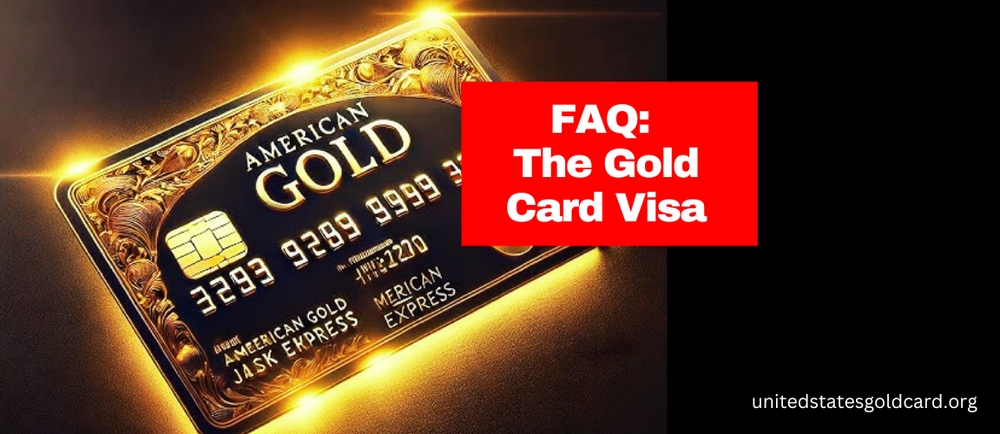Published
- 4 min read
Frequently Asked Questions (FAQ) About the Gold Card Visa

Frequently Asked Questions (FAQ) About the Gold Card Visa
Your Answers to the Top Queries on Trump’s New Investor Visa Proposal
As Trump’s Gold Card visa makes waves in the investor immigration space, many prospective applicants and curious onlookers have pressing questions. In this FAQ, we address the most common queries related to eligibility, benefits, tax implications, and the overall process. Whether you’re considering applying or just want to understand what this high-stakes visa entails, read on for clear, concise answers.
Q1: What Exactly Is the Gold Card Visa?
A: The Gold Card visa is a proposed investor visa introduced by President Trump that requires a one-time cash investment of $5 million. In exchange, applicants receive green card privileges “plus” a streamlined pathway to U.S. citizenship. Unlike the EB‑5 program, it focuses solely on a high-value financial contribution without strict job creation requirements.
Q2: Who Is Eligible to Apply?
A: While full details are still being finalized, eligibility typically requires:
- Financial Capacity: Proven ability to invest $5 million.
- Clean Record: A strong personal and professional background with no major legal issues.
- Economic Vision: Though not required to create jobs directly, you should demonstrate that your investment will positively impact the U.S. economy. It’s advisable to consult with an immigration lawyer or financial advisor for a personalized eligibility assessment.
Q3: What Benefits Does the Gold Card Visa Offer?
A: Holders of the Gold Card visa will enjoy:
- Permanent Residency: Green card privileges that allow you to live and work in the U.S.
- Pathway to Citizenship: An accelerated route to U.S. citizenship compared to traditional investor visas.
- Simplified Process: A more straightforward application process with a focus on financial contribution rather than job creation metrics.
Q4: How Does the Taxation Work?
A: The Gold Card visa proposal suggests that while you’ll pay full U.S. taxes on income earned within the country, income generated outside the U.S. might not be taxed by the U.S. government. However, the final tax details are subject to further clarification and will depend on prevailing U.S. tax laws. Consulting with a tax professional is crucial to understand the full implications for your personal financial situation.
Q5: What Documentation Will I Need to Provide?
A: Although the complete checklist is still in development, you can expect to need:
- Proof of Funds: Bank statements, audited financial reports, or investment portfolios demonstrating your ability to invest $5 million.
- Identity Verification: Valid passport and other identification documents.
- Background Documentation: Records that verify your professional history and ensure a clean legal record.
- Investment Proposal: A detailed outline of how your investment will contribute to the U.S. economy might also be required.
Q6: What Is the Expected Timeline for the Application Process?
A: While exact timelines are still emerging, the process is anticipated to be faster than the traditional EB‑5 system. Early estimates suggest:
- Application Submission: Soon after the official launch of the online portal.
- Vetting Process: Approximately 2 to 8 weeks, depending on the complexity of your application.
- Final Decision: Typically within 1–2 months post-submission. Keep in mind that these estimates may vary as the administration refines the process.
Q7: What Happens If My Application Is Rejected?
A: If your application is rejected, you will receive detailed feedback outlining the reasons. You can then address the issues—such as gathering additional documentation or correcting any discrepancies—and reapply. Consulting with an immigration attorney is highly recommended to navigate any rejections or appeals effectively.
Q8: How Does the Gold Card Compare to the EB‑5 Program?
A: The EB‑5 program requires a lower investment ($800,000–$1 million) along with a job creation mandate, while the Gold Card visa demands a flat $5 million investment with no explicit job creation requirement. The Gold Card is designed to streamline the process and target a narrower, wealthier demographic, potentially offering a faster path to citizenship but at a much higher cost.
Final Thoughts
The Gold Card visa represents a dramatic shift in U.S. investor immigration policy, raising both opportunities and questions. We hope this FAQ has shed light on the key aspects of the proposal and helped you understand what to expect. As more details emerge, we’ll keep this page updated with the latest information.